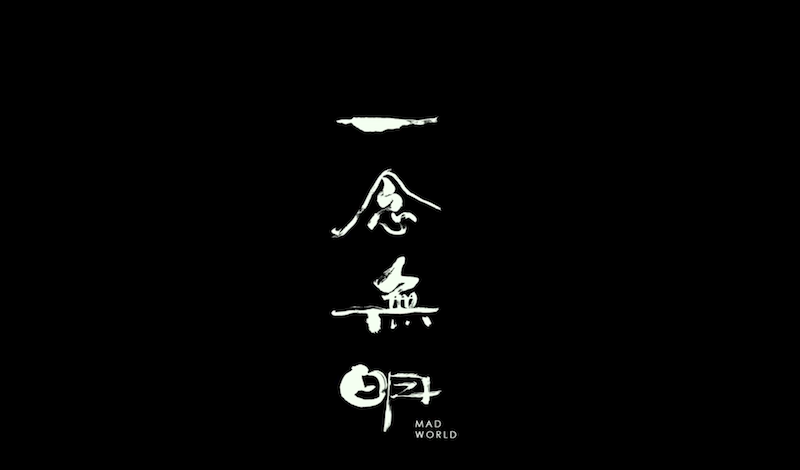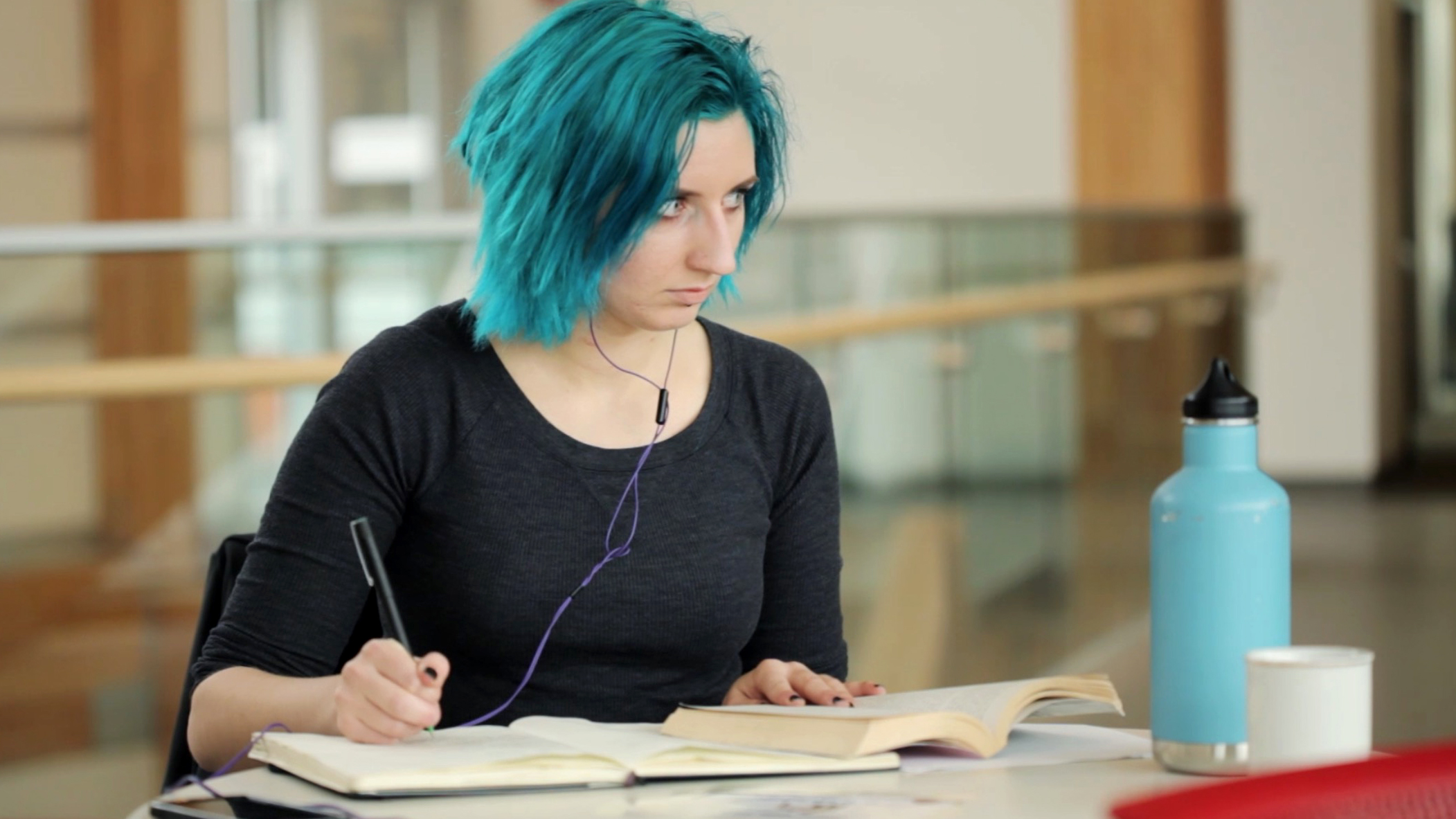I am the curator of the “Frames of Mind” Mental Health Film Series, a monthly program sponsored by the UBC Dept. of Psychiatry and The Cinematheque that uses award-winning films from around the world to promote awareness and education on issues pertaining to mental health and illness. Our programs occur every third Wednesday of the month at 7:30 pm at The Cinematheque (1131 Howe St). You can read about our upcoming programs here.
Now in its 15th year, “Frames of Mind” consists of a monthly evening screening of a feature film or documentary directly related to a particular mental health theme, which is then followed by a relevant presentation and moderated discussion. Recently, on May 17th, we showed a film on bipolar disorder called Mad World; it was followed by a discussion led by Dr. Erin Michalak, founder and leader of CREST.BD and Dr. Steven Barnes, co-deputy director of CREST.BD. We decided to show Mad World at Frames of Mind not because it’s an accurate depiction of bipolar disorder (in fact, it’s not particularly accurate at all) but rather because of the interesting points it raises in terms of stigma, family and community response to mental illness, and cross-cultural differences. To assist them with their discussion, I provided some background notes on the film.
The 2016 film Mad World, (original title: Yat nim mou ming) is directed by Wong Chun, and comes to us from Hong Kong. It stars Hong Kong A-listers Shawn Yue and Eric Tsang in a gritty independent drama which won the Golden Horse Award (Taiwan’s Oscar) for Best New Director. Made on a shoestring budget — the two stars took significant pay cuts to participate — the film portrays the difficult relationship between a mentally-ill former stockbroker and his estranged truck driver father, while also shedding light on the more unsavoury aspects of contemporary Hong Kong. As the film begins, Tung (Yue) is released into the grudging care of his father (Tsang) after several years in a mental hospital. In the cramped tenement his father shares with a multitude of judgmental and ill-informed neighbours, Tung must begin the challenging task of facing up to his troubled past (including the tragic death of his mother) while embarking on an uncertain future.
Mad World is very unusual for a film from Hong Kong — an independent drama with a social conscience. Mental illness is almost never addressed in the mainstream film industry there, which, like that of the United States, concentrates almost entirely on big budget box office mega-hits with little relevance to the “real world.” Thus, Mad World is a very rare film — one about ordinary people in crisis, which also critiques the harsh social and economic conditions of contemporary Hong Kong. The director has said that the film is meant to teach Hong Kong audiences compassion, or at the very least, to allow people to accept their own weaknesses and failures.
Mad World is interesting from a cross-cultural perspective, as the antagonism and discrimination directed toward the mentally ill is so readily on show, as is the ignorance shown towards the matter. In the film, a neighbour offers to introduce Tung’s father to a Daoist priest she knows — one highly skilled in exorcisms. A health worker suggests to the father that Tung be treated with chocolate, as the serotonin released by eating it will help with his depression. All the neighbours are afraid of Tung, imagining the violence they are sure simmers just below his placid exterior. A mother forbids her young son from spending time with Tung, afraid for his safety. Even Tung’s father sleeps with a hammer under his pillow.
The director of the film is certainly sympathetic to Tung’s plight, but the script leaves it unclear whether the young man actually killed his mother, or whether it was an accident. Although Tung is said to have been found not guilty by the court, the film leaves this a question in the audience’s mind by implying that he may have been found not criminally responsible. Indeed, the threat of violence seems to hang unspoken over Tung throughout the entire film.
How realistic was the dramatization of bipolar disorder in the film? The screenwriter has said that many of the characters and the events in the film were informed by real people and true-life stories. Personally, I would be surprised if the screenwriter had consulted a mental health professional while writing the script, as the behaviour exhibited by Tung didn’t seem to follow any apparent diagnosis. He seemed to be almost catatonic most of the time, and at other times perfectly lucid.
I found the mother’s characterization in the film particularly problematic. She seemed to be suffering from what seems to be a form of mental illness only seen on screen — a syndrome characterized by wild outbursts, extreme anguish, mood swings, lots and lots of screaming, and incomprehensible behaviour. I assume the actress had a great time with her role, but I personally had no idea what she was meant to be suffering from.
A bit of research on my part leads me to state that Hong Kong is in the midst of a mental health crisis. The latest data from the Hong Kong College of Psychiatrists shows that in 2016 there were only 345 working psychiatrists for a city with a population of over 7 million. Psychiatrists in Hong Kong see 30 to 40 patients during one shift in a hospital outpatient department – each visit is approximately 6 minutes long. Meanwhile, patients wait 3 to 4 years just for one of these micro-appointments.
In 2014, the Hong Kong Mental Morbidity Survey showed that 1 in 7 of the city’s residents had a common mental disorder (such as anxiety or depression). However, only 26% of those sought professional help, leaving many more to suffer in silence. Another survey reported levels of stress and anxiety in Hong Kong that are 250 times the global average.
And all this in a culture where mental illness is likely to be underreported, due to shame, embarrassment and stigmatization. Traditional Chinese views on the cause of mental illness are at least partly responsible for this. In this culture:
…mental illness may be regarded as the result of moral transgressions committed towards ancestors or social norms whereby the family is also held responsible. Alternatively, it can be attributed to hereditary or even ancestral inheritance of misconduct. Common beliefs also include cosmological forces, wrath of gods and ancestors, possession by spirits, hormones, diet, brain dysfunction, or even political ideology.
It is likely that strong psychiatric stigma is attached to the family because of the burden of intense shame and guilt they carry. Mental illness tarnishes family honour, name and ancestors. Origin of psychiatric stigma is partly in the fear of the Chinese family exposing its own shame to outsiders. The stronger the wish to conceal its ‘disgrace’ from being exposed, the more intense the psychiatric stigma.”
As a result, denial and somatization are often used to relieve the family of stigma. Herbs, special diets and traditional medicines are sought and there is strong resistance and extreme delay in seeking psychiatric help.
–“The Stigma of Mental Illness in Asian Cultures” by Chee Hong Ng
To make matters worse, mental health care in Hong Kong today is not covered by any insurance plan. And for those with insurance, companies are legally allowed to drop clients at any time if there is medical proof he or she is too high risk. And insurers see any mental health problem, no matter how common, as high risk.
Finally, I’d like to mention that the English title of the film, Mad World, has absolutely no relevance to the original Chinese title Yat Nim Mou Ming, which research tells me is actually an idiom referencing Buddha’s first Noble Truth of Suffering: that life contains inevitable, unavoidable suffering. This suffering may be universal, but it is how we acknowledge and understand it that may lead to enlightenment.
The film’s director has said that the film is meant to “…pose to the people of Hong Kong: how do we confront, awaken, empower ourselves, and seek change in the world that we are currently living in.” He has said the following:
…people who suffer from mental illnesses are labelled as ‘worthless’ in our society, but if you take some time to listen to their stories, you will start to forget about the labels, and instead, you’ll see a living person, with blood and flesh, just like any of us.
Caroline Coutts is a film curator, filmmaker, and programmer of “Frames of Mind” since its inception in September 2002.
Image source: Mad World Official Trailer







Leave a Reply